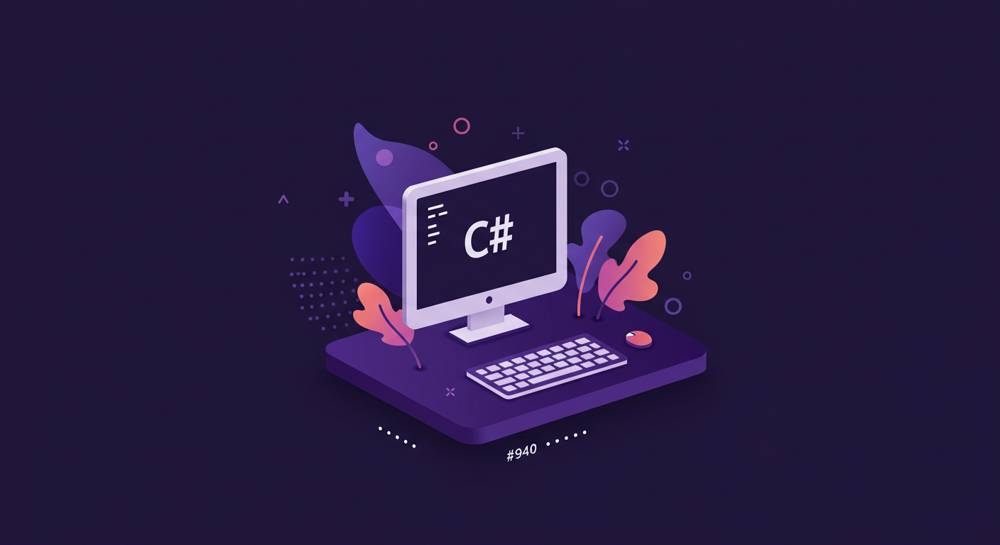- Start Learning C#
- C# Operators
- Variables & Constants in C#
- C# Data Types
- Conditional Statements in C#
- C# Loops
-
Functions and Modules in C#
- Functions and Modules
- Defining Functions
- Function Parameters and Arguments
- Return Statements
- Default and Keyword Arguments
- Variable-Length Arguments
- Lambda Functions
- Recursive Functions
- Scope and Lifetime of Variables
- Modules
- Creating and Importing Modules
- Using Built-in Modules
- Exploring Third-Party Modules
- Object-Oriented Programming (OOP) Concepts
- Design Patterns in C#
- Error Handling and Exceptions in C#
- File Handling in C#
- C# Memory Management
- Concurrency (Multithreading and Multiprocessing) in C#
-
Synchronous and Asynchronous in C#
- Synchronous and Asynchronous Programming
- Blocking and Non-Blocking Operations
- Synchronous Programming
- Asynchronous Programming
- Key Differences Between Synchronous and Asynchronous Programming
- Benefits and Drawbacks of Synchronous Programming
- Benefits and Drawbacks of Asynchronous Programming
- Error Handling in Synchronous and Asynchronous Programming
- Working with Libraries and Packages
- Code Style and Conventions in C#
- Introduction to Web Development
-
Data Analysis in C#
- Data Analysis
- The Data Analysis Process
- Key Concepts in Data Analysis
- Data Structures for Data Analysis
- Data Loading and Input/Output Operations
- Data Cleaning and Preprocessing Techniques
- Data Exploration and Descriptive Statistics
- Data Visualization Techniques and Tools
- Statistical Analysis Methods and Implementations
- Working with Different Data Formats (CSV, JSON, XML, Databases)
- Data Manipulation and Transformation
- Advanced C# Concepts
- Testing and Debugging in C#
- Logging and Monitoring in C#
- C# Secure Coding
Welcome to this comprehensive C# tutorial! In this article, you will not only gain valuable insights into C# programming but also receive training that can enhance your development skills. Whether you're looking to refresh your knowledge or dive deeper into the intricacies of C#, this guide is designed with intermediate and professional developers in mind.
Introduction to C# Programming
C# (pronounced "C-sharp") is a modern, object-oriented programming language developed by Microsoft as part of its .NET initiative. Since its inception in the early 2000s, C# has evolved significantly and has become a versatile language used for various applications, from web development to game programming and enterprise software.
Key Features of C#
C# offers a robust set of features that contribute to its popularity among developers:
- Strongly Typed Language: This ensures that type errors are caught at compile time, reducing runtime errors.
- Object-Oriented: C# supports encapsulation, inheritance, and polymorphism, allowing for clean, modular code.
- Rich Standard Library: The .NET framework provides a vast array of libraries and tools that facilitate application development.
- Cross-Platform Development: With .NET Core and .NET 5 onwards, C# applications can run on Windows, macOS, and Linux.
Historical Context
C# was created to improve productivity in software development. Its design was influenced by languages like C++, Java, and Delphi. The first version, C# 1.0, was released in 2000, and since then, it has undergone several updates. The most notable enhancements came with the advent of C# 2.0, which introduced generics, and C# 7.0, which brought about pattern matching and tuples.
For a deeper exploration of C#’s evolution, you can refer to the official Microsoft C# documentation.
Writing Your First C# Script
Now that you have a foundational understanding of C#, let’s write your first C# script. This simple console application will demonstrate the basic syntax and structure of a C# program.
Setting Up Your Environment
To get started, ensure you have the .NET SDK installed on your machine. You can download it from the official Microsoft .NET site. After installation, create a new directory for your project and navigate to it using your terminal or command prompt.
Creating Your First Program
Open your terminal and execute the following commands:
dotnet new console -n HelloWorld
cd HelloWorldThis creates a new console application named HelloWorld. Now, let’s look at the Program.cs file, which contains the main entry point of our application.
Understanding the Code
Here’s the default code generated for your application:
using System;
class Program
{
static void Main(string[] args)
{
Console.WriteLine("Hello, World!");
}
}Code Breakdown
- Namespaces: The
using System;statement includes the System namespace, allowing us to use its classes without fully qualifying them. - Class Declaration:
class Programdefines a new class namedProgram. In C#, everything is encapsulated in classes. - Main Method:
static void Main(string[] args)is the entry point of the application. TheMainmethod is where the execution begins. - Output:
Console.WriteLine("Hello, World!");is a simple command that outputs the string to the console.
Running Your Application
To run your application, execute the following command in your terminal:
dotnet runYou should see the output:
Hello, World!Congratulations! You've just written and executed your first C# program.
Expanding Your Knowledge
As you continue to learn C#, consider exploring more advanced topics such as:
- LINQ (Language Integrated Query): A powerful feature for querying collections in a concise manner.
- Asynchronous Programming: Understand how to write non-blocking code using async and await.
- Entity Framework: A robust Object-Relational Mapper (ORM) that allows you to work with databases using C# objects.
For further reading, the official C# Programming Guide provides a wealth of information on various topics.
Summary
In this tutorial, we introduced you to the fundamentals of C# programming, covering its key features and historical context. You also learned how to set up your environment and write a simple console application. By mastering C#, you open doors to a plethora of opportunities in software development, whether it be in web applications, game development, or enterprise solutions.
Keep practicing and exploring the vast landscape of C# programming. The more you engage with the language, the more proficient you will become.
Last Update: 11 Jan, 2025

